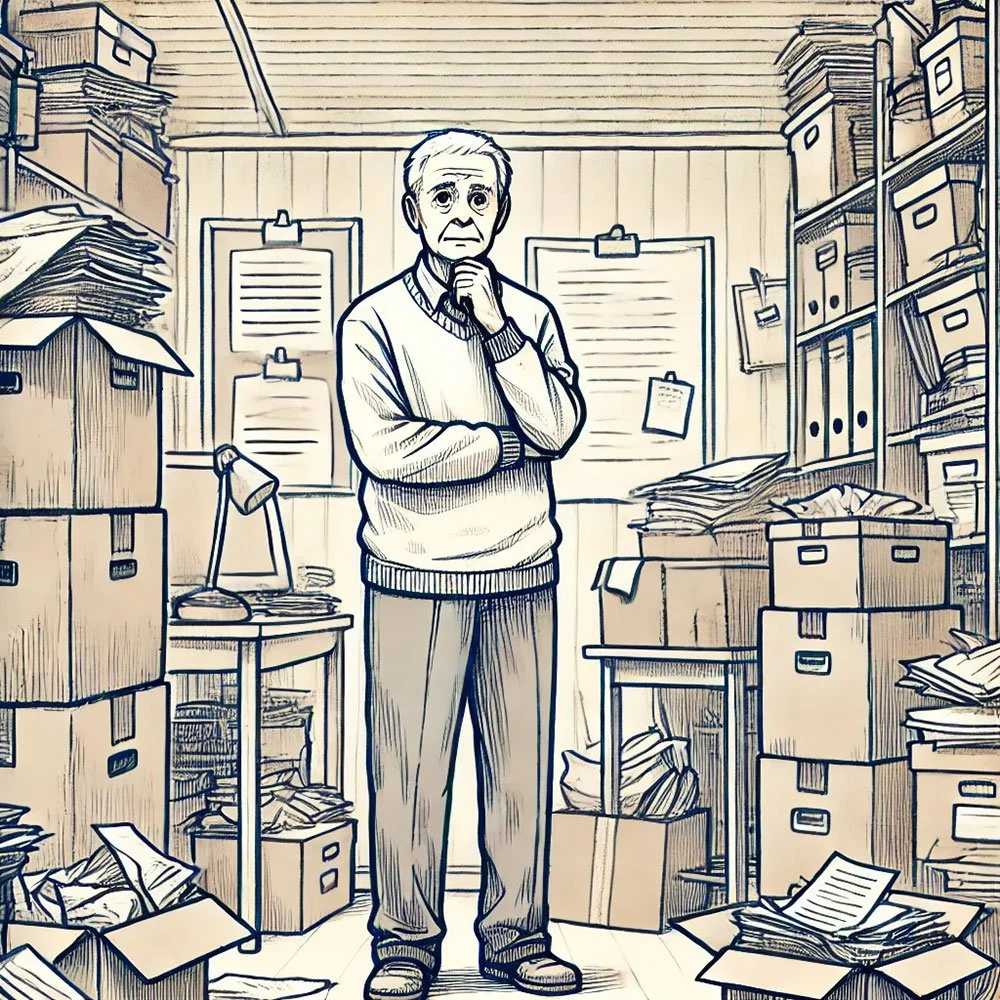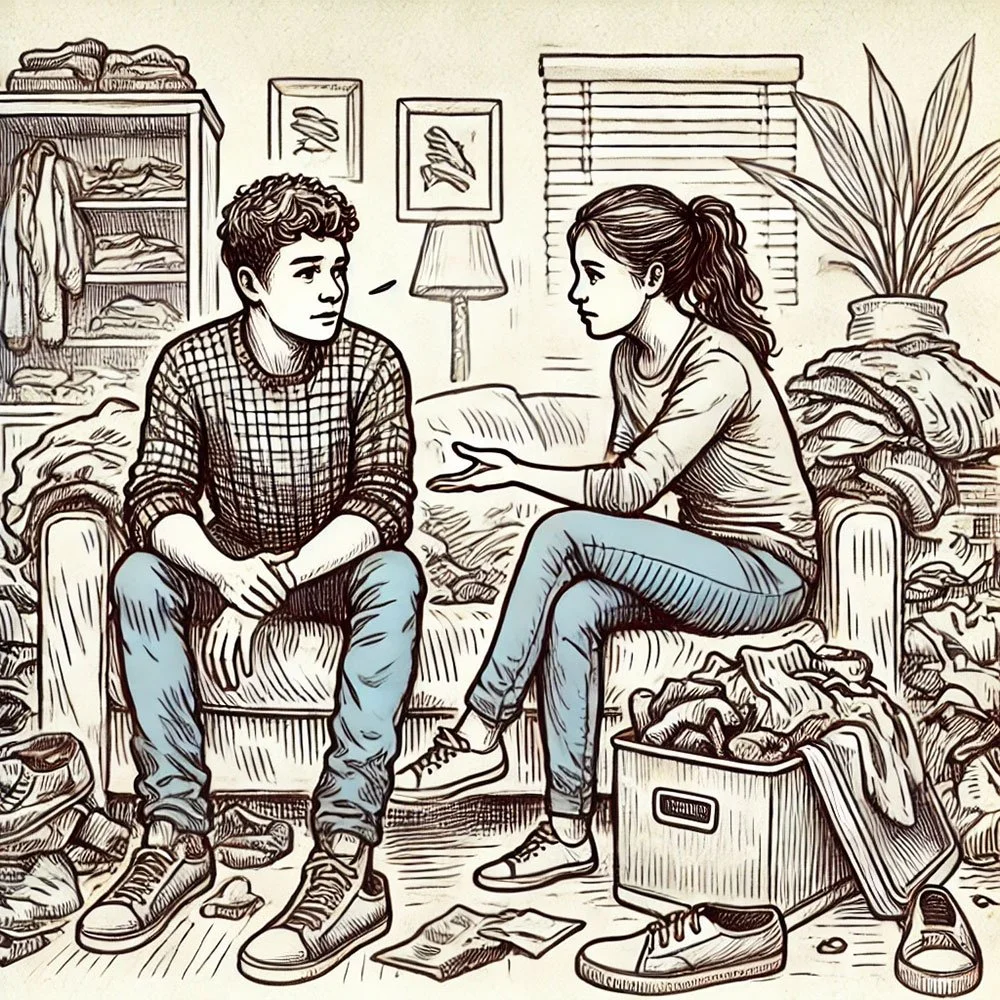This is what clutter does to us: How to address overwhelm
Clutter Taking Over Your San Diego Home? Here’s How to Recognize and Address the Problems It Creates
If clutter has taken over your San Diego home and you’re not sure where to start, you’re not alone. Clutter can affect more than just your living space—it can take a toll on your mental health, relationships, and overall quality of life. Whether you're dealing with a serious hoarding issue, struggling to let go of items, or simply overwhelmed by accumulated clutter, this guide will help you understand the problems clutter creates and the steps you can take to address them.
Recognizing the impact of clutter is an important first step toward regaining control of your space and well-being. We’ll explore the issues that clutter can cause and provide insights on how to begin addressing these challenges. If you’re in San Diego and need professional help,San Diego Hazmat Cleanup offers compassionate and specialized services to support you in your journey to a clutter-free home. We also offer $300 of free online therapy! Just give us a call!
1. Feeling Stressed and Overwhelmed by Clutter
When your home is filled with clutter, the sense of overwhelm can be significant. The sight of disorganized spaces can trigger stress, anxiety, or even feelings of shame. This is especially true if you struggle with letting go of things or have a history of hoarding behaviors. Clutter doesn’t just fill physical space—it also weighs on you emotionally, making it hard to relax or feel at ease.
The clutter often represents tasks that haven’t been completed, postponed decisions, or memories that are difficult to face. Understanding how clutter contributes to emotional overwhelm is crucial for taking the first steps toward a more manageable living environment.
Ways to Cope with the Emotional Impact:
Acknowledge Your Feelings About Clutter: It's important to recognize and accept your feelings about clutter, whether it's frustration, guilt, or anxiety. This can help you start to address the emotional toll clutter takes.
Understand Clutter’s Effect on Mental Health: Clutter can contribute to feelings of helplessness and mental fatigue. By acknowledging its effect on your mental state, you can better understand why addressing it is more than just a physical task.
Reach Out for Professional Help: If the emotional weight of clutter feels like too much to handle on your own, San Diego Hazmat Cleanup offers professional assistance in dealing with hoarding and clutter-related challenges. Their team can help you approach the clean-up process with compassion and expertise.
Real-Life Example:
If you feel anxious every time you walk into a cluttered living room or bedroom, it may not just be the mess causing stress, but the emotional reminders tied to the items. Acknowledging this can help you start to address the problem in a more thoughtful way.
2. How Clutter Can Affect Your Relationships
Clutter doesn’t just impact you; it can also affect the people you live with or interact with regularly. A cluttered home can lead to arguments, social isolation, and even shame about inviting others into your space. For families dealing with hoarding, these tensions can be especially pronounced.
Recognizing how clutter can create conflict or prevent meaningful social interactions is an essential step toward improving your relationships.
Ways to Address the Relationship Strain:
Openly Discuss Clutter Concerns: Share your feelings and struggles about the clutter with your family members. Open communication helps reduce conflict and foster understanding, especially if the hoarding behavior is a shared concern.
Create a Plan for Shared Spaces: Establish agreements about which areas of the home should remain clutter-free and which can be used as personal storage. This helps set boundaries and reduce household tension.
Consider Professional Mediation for Hoarding Situations: If clutter is causing significant conflict, a third-party expert from San Diego Hazmat Cleanup can help mediate and guide the clean-up process. Their team specializes in working compassionately with families to address hoarding issues.
Real-Life Example:
If your spouse or roommate is frustrated because of clutter in shared spaces like the kitchen or living room, start with a conversation. Agree on a small area to work on together, such as the dining table, and use it as a starting point for further progress.
3. The Challenge of Letting Go: Emotional Attachments to Clutter
For many people, clutter isn’t just a collection of things—it’s a reflection of memories, past experiences, or even a part of their identity. Letting go of items that hold sentimental value can be difficult, especially for individuals with hoarding tendencies. Understanding the emotional attachment to these possessions is a crucial step in overcoming clutter.
The key is to recognize when an item serves a meaningful purpose and when it’s simply contributing to the clutter. This awareness can help you start to make thoughtful decisions about what stays and what goes.
Strategies for Managing Emotional Attachments:
Reflect on Why Certain Items Are Hard to Let Go: Consider the reasons why you’re holding onto a particular item. Is it for practical use, sentimental value, or fear of letting go? Understanding this can help you make more informed decisions.
Keep the Memory, Not the Clutter: Remember that memories are not confined to physical objects. Consider taking photos of sentimental items before letting them go, allowing you to keep the memory without keeping the item itself.
Get Help from Professionals Experienced in Hoarding and Clutter: If letting go of items feels impossible, consider working with experts from San Diego Hazmat Cleanup. Their team can provide support and strategies tailored to your needs, ensuring that progress is made without disregarding your feelings.
Real-Life Example:
If you find yourself holding onto old clothes because they remind you of a different time in your life, it might be time to ask if these items are still serving a purpose. Take a photo of the clothes to preserve the memory, and consider donating them to help others.
4. Safety Risks Associated with Clutter in Your Home
Clutter can go beyond causing stress—it can also pose serious safety risks. A cluttered home can block emergency exits, create tripping hazards, and even hide fire risks. In cases of hoarding, the accumulation of items can contribute to unsafe living conditions.
Addressing the safety risks that clutter creates is essential for maintaining a healthy living environment. Recognizing these risks is the first step to taking action.
How to Tackle Safety Concerns:
Identify Hazardous Areas: Look for clutter in high-risk areas, such as doorways, hallways, or near heat sources. These spaces need to remain clear to ensure your home is safe and accessible.
Recognize Clutter’s Impact on Health: Cluttered environments can worsen allergies, attract pests, and contribute to poor air quality. Understanding the potential health impact of clutter can motivate you to take steps toward a cleaner space.
Consult Professional Clutter Removal Services: If the clutter has reached a dangerous level, San Diego Hazmat Cleanup specializes in safely managing hoarding situations and restoring a healthy living environment. Their expertise can help address safety concerns effectively.
Real-Life Example:
A cluttered hallway can quickly become a tripping hazard or an obstacle in case of emergencies. Recognizing the importance of keeping pathways clear can help you prioritize these areas and make your home safer.
5. Time and Energy Lost to Managing Clutter
Clutter not only takes up space but also consumes your time and energy. The more clutter there is, the harder it is to find what you need or keep your home in order. This can lead to frustration and wasted time spent searching for items, which ultimately drains your energy.
Understanding how clutter affects your productivity can be a key motivator to start taking action, even if it's just a small step at a time.
Steps to Reduce Time Lost to Clutter:
Acknowledge the Impact on Your Daily Routine: Understand that clutter doesn’t just take up space—it disrupts your ability to move through your day efficiently. Recognizing this can help motivate you to make changes.
Start with Key Areas That Affect Your Routine: Identify spaces where clutter tends to interfere with daily tasks, such as the kitchen countertop or the entryway. Addressing these areas first can have a significant impact on your overall time management.
Seek Professional Assistance for Severe Clutter: If the clutter feels too overwhelming to handle alone, San Diego Hazmat Cleanup provides expert decluttering services. Their team can help restore order to your space, saving you time and energy.
Real-Life Example:
If you often find yourself searching for keys or important documents, it may be time to create a designated spot for these items. Clearing clutter from commonly used areas can help streamline your routine and reduce the time spent searching for things.
Conclusion: Understanding the Impact of Clutter is the First Step
If clutter has taken over your San Diego home, the first step is to acknowledge the effect it’s having on your life. Clutter can create emotional, relational, safety, and time-related challenges that extend far beyond just the physical mess. Recognizing these issues is an essential step toward creating a more organized and peaceful home.
Remember, you don’t have to handle everything at once, and you don’t have to do it alone. Whether you need a little extra help to get started or require professional support to manage a hoarding situation, San Diego Hazmat Cleanup offers compassionate services tailored to your needs.
Take the first step today. Contact San Diego Hazmat Cleanup for expert help with clutter and hoarding clean-up in San Diego.




